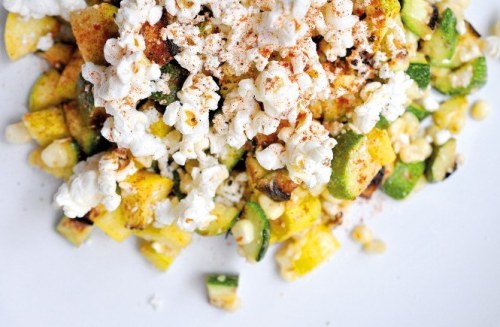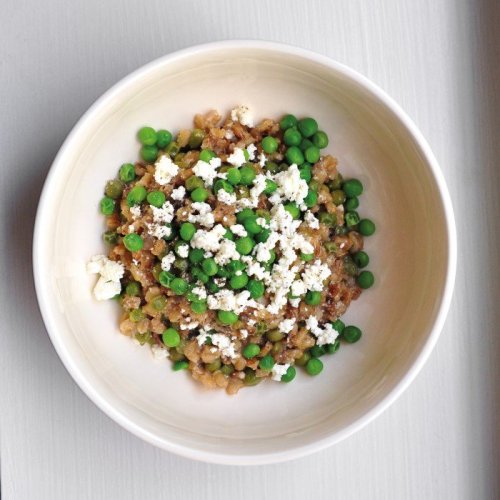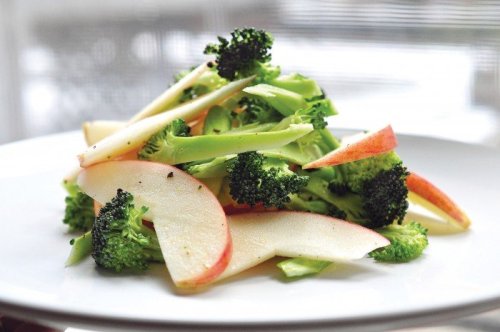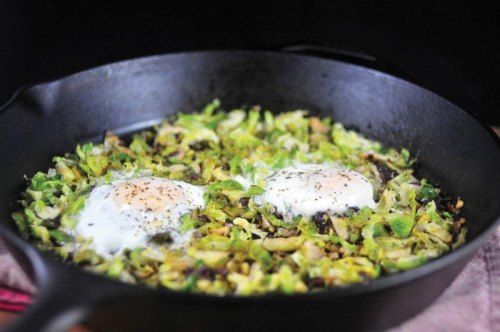5 hacks for cooking healthy meals on a budget
The popular "Good and Cheap" cookbook is full of healthy, budget-friendly recipes based on the $4 allowance provided by the U.S. food stamp program.

When Leanne Brown, then a master’s degree candidate in food studies at New York University, posted her capstone project online, she had no idea it would go viral, let alone turn into an actual book.
The collection of healthy, budget-friendly recipes was originally geared toward those living on the daily $4 allowance provided by the U.S. government’s food stamp program. But—judging from the 100,000 downloads her PDF cookbook received in the first few weeks—it clearly spoke to a wider audience.
That early success prompted Brown to launch a Kickstarter campaign to self-publish it as an actual book; the second edition, Good and Cheap: Eat Well on $4/Day, was released this summer with Workman Press, again to rave reviews.

Why is has it been so successful? Brown thinks one reason is that she busts through the myths that cooking is hard and eating well is expensive.
“Healthy foods are actually really inexpensive in this country, and it takes very little time and know-how to make something even better than the boxed and fast foods out there,” says Brown. “That’s something I so badly want to share with people. I want to make them feel empowered in the kitchen.”
Good and Cheap isn’t just about sticking to a budget—it’s also about finding pleasure in making and eating nutritious meals. The recipes drive that home: think breakfast quinoa, hearty potato leek pizza, salads where popcorn plays a culinary role. And with the help of her publisher, Brown has partnered with hundreds of non-profits to donate a copy of Good and Cheap to someone in need for every copy that’s sold.
Here, Brown shares five super helpful tips for getting the most out of your next trip to the grocery store—no matter what budget you’re working with. —Larkin Clark
Visit www.leannebrown.com to learn more and download a free PDF copy of the first edition of Good and Cheap; the second edition book is available at www.amazon.com
(Photos: Good and Cheap, Jordan Matter)

Give “unsexy” grains a chance.
You might naturally gravitate toward quinoa, but Brown suggests broadening your horizons.
“Most whole grains are very affordable. They’re in their most raw state and are pretty easy to cook. Any dish you can make with rice, oats, or quinoa, you can make with other grains. For example, there’s a really nice barley risotto recipe in Good and Cheap. Barley is considered an unsexy grain, but it has great flavor and texture and is really satisfying.”
(Photo: Good and Cheap)

Skip the pre-washed, pre-packaged produce.
According to Brown, picking out fruit and veggies by hand can save a lot of dough: The pre-washed, packaged version of basics like carrots or greens can cost nearly twice the price. She also suggests stocking up on in-season produce and substituting it for similar ingredients in your favorite recipes (she even includes a guide to seasonal produce in the book).
“In New York, we get lots of Brussels sprouts, winter squash, and cauliflower this time of year. Because they’re at their peak and bountiful, you’re more likely to find them at a reasonable price.”
(Photo: Good and Cheap)

Don’t be afraid to experiment.
Especially for those with food allergies or intolerances, Brown says getting creative with your swaps is a great way to keep meals interesting. “Try using popcorn on top of salads instead of croutons. It’s something they do in Peru, especially for people who are staying away from gluten. Or, you can substitute a baked potato or sweet potato for toast in any recipes that require toast.”
(Photo: Good and Cheap)

Repurpose veggies that are past their prime.
Don’t look at your slightly wilted greens and think that, just because they’re not fresh enough for a salad, you need to throw them out. “Just cook them a bit and add to soups, quiche, jambalaya, or grill or roast them.” They’ll get an awesome second life.
(Photo: Good and Cheap)

Use every last bit.
“People don’t tend to use the zest of citrus fruit—they just throw it out—but that’s where all the essential oils are and it adds so much flavor,” says Brown, who uses it to add zing to even simple dishes like hummus.
Leeks and scallions are also great from root to tip. “People tend to only use the white part, but in Asian countries and Italy, they use the whole thing.” Because if there’s one thing that can help you stay on budget, it’s avoiding waste.
(Photo: Good and Cheap)

More Reading
The 5 best organic wines to pair with your favorite healthy dishes4 super-healthy ways to get your comfort food fix5 go-to recipes from a gluten-free guru
(Photos: Eating Purely)
Sign Up for Our Daily Newsletter
Get all the latest in wellness, trends, food, fitness, beauty, and more delivered right to your inbox.
Got it, you've been added to our email list.










